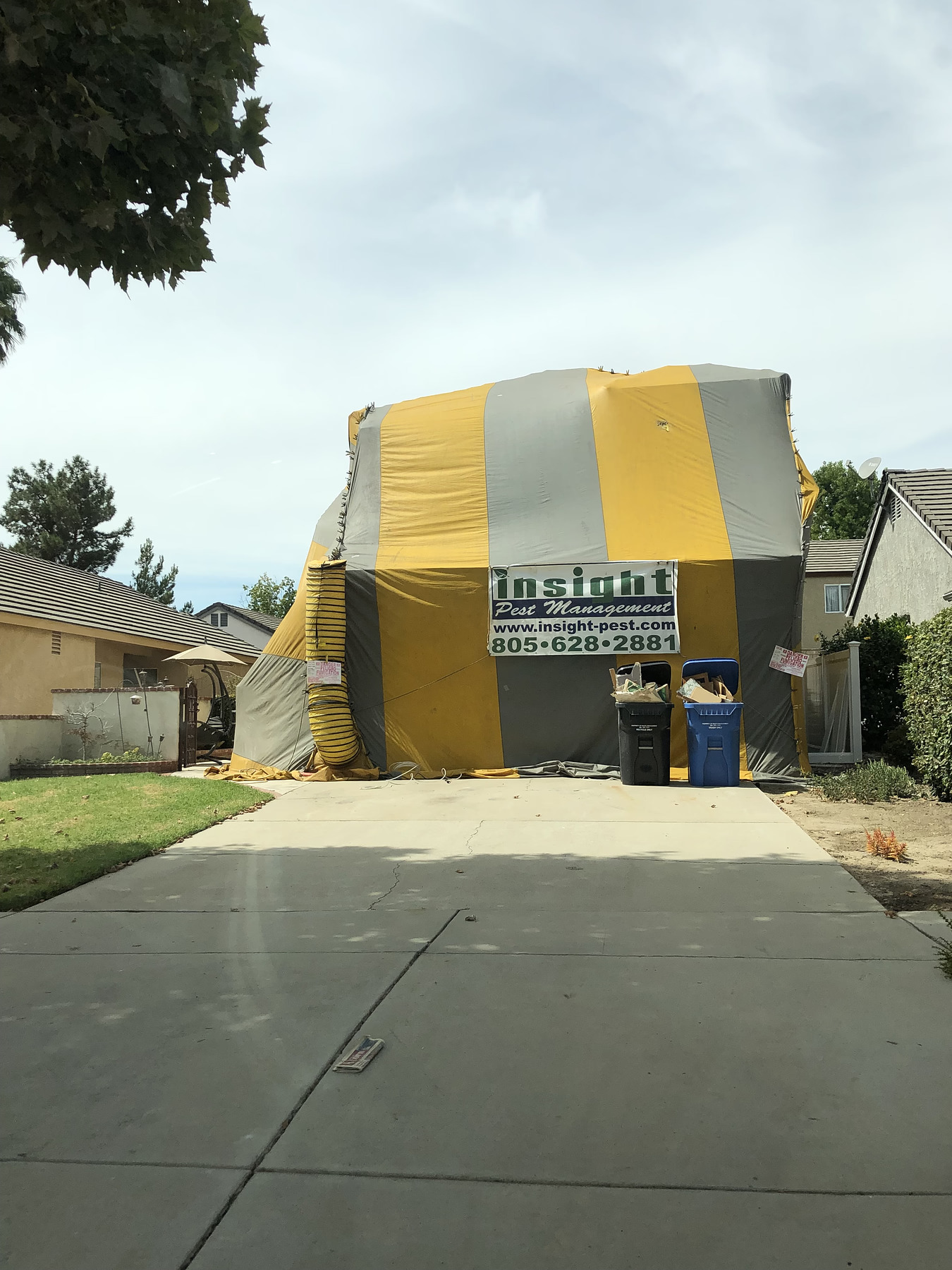As a termite inspector in Southern California, I consistently uncover evidence of drywood termites in nearly eighty percent of the homes I inspect. It’s a dependable pattern that we advise new trainees to adopt – slow down, scrutinize every nook and cranny, and you’re likely to discover traces of drywood termite activity on almost any structure in Southern California.
Given the prevalence of these findings, a common question arises: “Should I tent my home?” Today, my aim is to provide you with insights and perspectives to help you make an informed decision about tenting or fumigating your home. We’ll delve into the fundamentals of fumigation safety, its effectiveness, and key considerations in the decision-making process.
In my early days of fumigation training, the experience was genuinely daunting. Climbing two-story ladders, handling 100-pound tarps, and being surrounded by what I initially perceived as a potentially deadly gas were fears I grappled with. Over the 24 years of performing structural fumigations, I’ve come to realize that the primary risks are associated with inexperience and the physical demands of the job. Slippery roofs, challenging terrain, and unpredictable weather pose greater threats than the fumigation process itself. Complaints about health concerns during fumigation are rare, and state-mandated documentation affirms that no residue remains, ensuring occupants are not exposed to the active ingredients.
Addressing the pivotal question, “Will all the bugs die?” my response remains consistent – “not reliably.” Drywood termites, residing within concealed tunnels in the wood they infest, require a lower gas exposure compared to insects with robust exoskeletons. Fumigation penetrates structural elements, effectively eliminating termites hidden deep within walls, voids, or dense structural framing. This unique feature makes fumigation a preferred method of control.
When contemplating whether your house is a suitable candidate for fumigation, factors such as a concrete apron, well-maintained landscape, and minimal obstructions favor tenting. Conversely, if your property has attached structures, occupants unable to vacate, or an abundance of vines and foliage, fumigation may be less advantageous. Freestanding structures generally lend themselves well to fumigation, and arrangements can often be made for group structures. The extent of termite infestation also plays a crucial role, with a primary fumigation recommendation typically triggered by three or more active termite areas or any infestation extending into inaccessible regions.
Consider this information as a guide to comprehend the factors influencing your termite infestation. Fumigation may be a suitable choice, or depending on specific circumstances, a chemical treatment approach might be more applicable to your situation.


